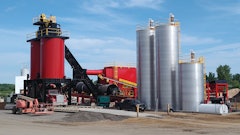Sometime around April 1, 2008 the Minnesota Pollution Control Agency (MPCA) learned that some storm water detention pond sediments in the Twin Cities area contained a class of compounds called polycyclic aromatic hydrocarbons (PAHs). As indicated in Part 1 of “How Laws are Made in Minnesota,” some MPCA staff had identified refined coal tar-based pavement sealers (RTS) as a possible source based on claims made in a paper published by several U.S. Geological Survey (USGS) and City of Austin (CoA), Texas staff scientists.
A well-known environment consulting company, Earth Tech, was retained to look into the issue and, in June 2008, issued a report that concluded:
|
In other words, Earth Tech was unable to make a connection between the PAHs in stormwater pond sediments and RTS. Also available at the time was a critical comment about the USGS and CoA paper that had been published in 2006, in which it was which observed:
|
On July 8, 2008, MPCA’s Keith Cherryholmes wrote an email to MPCA staff scientist, Dr. Judy Crane:
|
On November 20, in an email that appears to be from Dale Thompson, there is this:
|
Problem is, the industry did not begin to re-organize PCTC to be able to address these issues until August 2008, and was in no position to have voiced even weak opposition at the time. Also, emails included in MPCA’s FOIA response only include correspondence with a junior scientist in EPA’s Chesapeake Bay Program Office. There is no indication of communication with any EPA policy-setting arm, and certainly no hint that any of MPCA’s staff was concerned in any way about communicating with industry.
Shortly thereafter, MPCA decided to recommend a ban on RTS in the State of Minnesota. On November 26, 2008, an MPCA staff scientist, Dr. Judy Crane, wrote the following in an email to her superior, Dale Thompson:
|
Thus, without regard to the findings of MPCA’s nationally respected consultant, without consideration of published studies that contradicted claims made in the USGS and CoA paper and without communicating with RTS businesses, but with assurances from an unidentified source that EPA was about to issue a “strong recommendation,” MPCA began a quest to ban RTS in Minnesota.
In the next column, MPCA offers money to Minnesota cities that ban RTS.



























